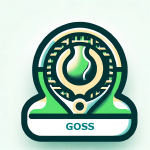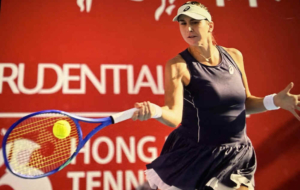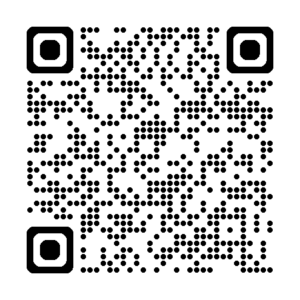Club Championships: Men’s Semifinals
Club Championships: Men’s Semifinals
What a contrast—both in players and conditions
Three former champions, including the defending titleholder, stood alongside a newcomer to the championship stage. Their styles spanned the spectrum—from tireless retrieving to smooth all-court precision.
And while their games clashed in fascinating ways, so too did the weather: swirling winds tested timing, tactics, and temperament, adding another layer to an already compelling day of tennis.
The Lineup: A Clash of Contrasts
Andre – The explosive shot maker. Brings pace and intent to every strike, looking to finish points early with big serves and heavy groundstrokes. His physicality and aggressive mindset can overwhelm opponents—particularly when he’s executing his signature serve-plus-one strategy, which suits his game perfectly.
Dave – The true all-rounder. Brings balance, composure, and tactical adaptability. Reads the game well, adjusts to different styles and conditions, and uses his versatility to stay in control of rallies and build pressure methodically.
Cam – The ultimate all-court weapon. Blends smooth, effortless power with intelligent shot selection and calm under pressure. Equally comfortable redirecting pace or constructing points with precision, Cam can hurt you from anywhere on the court.
Rimmo – The gritty, never-say-die retriever. Relentless in his movement and mentally tough, he thrives on defense, dragging opponents into extended running game and demanding they win each point multiple times. A master of disruption who turns scrambles into pressure.
Match 1: Andre def. Dave – 6/4 6/1
Wind or Sun? Pick your poison.
The 11:30am match started under sunny skies with a strong, swirling southerly wind that wreaked havoc on tosses and rhythm. Both players struggled early, with Dave eventually holding after a long tight deuce battle in the second game.
-
Key moment: At 4–5, Andre switched gears—chip-and-charging with the wind, applying pressure and forcing errors from Dave to steal the set 6–4. Just one service game earlier, Dave had shown incredible resilience, saving five break points in a row to level at 4–4. You could sense Andre’s frustration mounting after missing that opportunity. But to his credit, he regrouped with composure, held serve solidly, then launched a full-tilt attack on Dave’s second serve. Andre is a big presence at the net—hard to pass, and extremely dangerous when moving forward. That well-timed tactical shift played perfectly to his strengths and turned the tide.
-
Set 2: More of the same chaos. Andre attacked relentlessly, adapting better to the conditions and finishing points earlier. Dave tried to neutralize with serve-volleying but struggled to hold off the pressure.
-
Summary: Andre’s ability to adjust tactics mid-match and use the wind to his advantage proved decisive. Dave, by contrast, struggled to find rhythm on serve, landing less than 50% of his first serves, which left him vulnerable to ever increasing pressure.
Match 2: Cam def. Rimmo – 6/3 0/6 10/1
Two worlds colliding.
The 1:30pm match brought slightly calmer winds and no more sun—but the contrast in playing styles was as stark as ever. On one side, Cam—the picture of relaxed athleticism, capable of effortless acceleration and clean power off both wings. On the other, Rimmo—the grinder, the retriever, the relentless disruptor who thrives on dragging opponents into uncomfortable rallies.
-
Set 1: Rimmo opened with a clever plan—slicing low into the wind, taking pace off the ball, and keeping Cam out of rhythm. For a few games it worked, especially with both players exchanging early breaks as they adjusted to the tricky breeze. But once Cam found his timing, his easy power and court coverage began to take control. He started hitting through the wind, absorbing Rimmo’s spin and redirecting it with pace, forcing errors and creating openings. He closed out the set 6–3 with authority.
-
Set 2: The match flipped entirely. Rimmo upped his consistency and depth, forcing Cam to play longer rallies and taking time away with deep, well-placed balls. Cam lost his rhythm, over-pressed on attack, and Rimmo punished every half-chance. Cam’s footwork became reactive rather than proactive, and Rimmo capitalized on every unforced error. It was a clean sweep—6–0 Rimmo.
-
Match Tiebreak: But champions reset. Cam took a moment before the breaker, visibly calming himself, locking back in. He came out swinging, attacking with measured aggression, cutting down unforced errors, and finding his targets with surgical precision. Rimmo didn’t get any breathing room as Cam raced ahead and closed it out 10–1.
-
Wrap
Two very different semifinals. One dominated by tactical adjustments in brutal wind, the other showcasing mental toughness in swinging momentum.
What was largely missing—apart from Cam’s composed match tiebreak—was tactical adaptation to the wind. Most players attempted to power through the conditions rather than adjust. The swirling gusts demanded more nuance: using the wind as an ally, mixing up serve spins and placements, and allowing the strong breeze to move the ball outside the opponent’s ideal contact zone.
The final is set to be a classic clash of power and precision, aggression and composure. Whatever the weather brings next—expect fireworks.
As they say, tennis was the winner!






